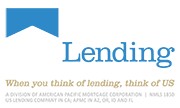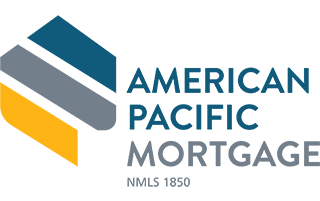Everything You Need To Know About Loan Origination Fees
 If you’re taking out a home mortgage to fund the purchase of a house, be prepared to pay for a number of different closing costs before the transaction can take place. Closing costs vary from lender to lender as well as from loan to loan. For the buyer, the closing costs mostly consist of fees and expenses owed to various parties. The most expensive of these closing fees is usually the loan origination fee.
If you’re taking out a home mortgage to fund the purchase of a house, be prepared to pay for a number of different closing costs before the transaction can take place. Closing costs vary from lender to lender as well as from loan to loan. For the buyer, the closing costs mostly consist of fees and expenses owed to various parties. The most expensive of these closing fees is usually the loan origination fee.
What Is A Loan Origination Fee?
The loan origination fee is paid to your loan officer or mortgage broker for giving you the loan and all of the work that they have to do to fund you the loan, including paperwork, verifications, and calculations. Basically, it’s their commission. You will be required to pay the loan origination fee at the closing of the home sale. The origination fee is either expressed as a percentage or as a point. When expressed as a point, a single point is equal to one percent of the loan.
Good-Faith Estimate (GFE)
Loan origination fees vary in cost based on numerous factors, including the lender you’re using, the services they are charging for, the type of loan you’ve taken out, and the size of the loan you’re taking out. You’ll want to know how much it will cost before you close on your home, which is why lenders provide good-faith estimates. A good-faith estimate provides the estimated closing costs in list form, so you’ll be able to see how much your loan origination fee is likely to be. Lenders are required to provide a good-faith estimate within three days of receiving your loan application.
Average Loan Origination Fee
Most loan origination fees fall somewhere between 0.5 and 1 percent; however, the average tends to be around 1 percent. The more work is required in the processing of the loan, the higher the loan origination fee will be. The same goes for loans that are riskier (for example, if the borrower doesn’t have good credit, the loan will be considered a bigger risk) or if the size of the loan is smaller.
Maximum Loan Origination Fee
Many mortgage types have certain protections built in them to prevent lenders from overcharging for their loan origination fees. For example, mortgages backed by Fannie Mae and Freddie Mac (known as qualified mortgages) have a loan origination fee cap of 3 percent for loan amounts of $100,000 or more, while USDA loans cap loan origination fees at 1 percent.
What’s Included In A Loan Origination Fee
Some lenders charge a single loan origination fee, while others itemize the fee. Whatever the case may be, the fee will cover several different services, including preparing the necessary documents, submitting the application, underwriting the loan (which is the process of verifying all of your documents and information), and processing the loan.
What You Need To Know
The following are a few things you need to know about paying the loan origination fee:
It Must Be Paid In Full
You will be required to pay the loan origination fee in full before you can close on the house. This means that you cannot pay your lender the fee on some kind of a payment plan. You will also have to pay using a cashier’s check since lenders cannot take personal checks or cash.
It’s Different From A Down Payment
Your down payment is a part of the home’s cost, but the loan origination fee is not. The amount you pay for your down payment can also affect the terms of your loan (at least, on a conventional loan), by helping reduce the interest rate as well as reducing the size of your monthly payments. The loan origination fee does not affect the actual loan that you take out–it’s the fee charged for funding the loan.
Smaller Houses May See Higher Percentage-Based Fees
Mortgage brokers and loan officers make their money from commissions. If you’re buying a smaller house, it means that you’re taking out a smaller loan, and the mortgage broker or loan officer will be making less money. Since their commission is likely based on a percentage of the smaller loan, they may increase the loan origination fee.
How To Lower Your Loan Origination Fee
Even though the loan origination fee is the fee charged by your lender for their services, there are still ways that you could potentially lower it. If you are a low-risk borrower (for example, you have excellent credit and a high-paying job), a lender may be willing to waive the fee completely. They know they’ll be able to sell your loan off to an investor because you are a low risk borrower. They’ll be able to make their commission when they sell it.
You can also negotiate with your mortgage broker or loan officer if you shop around and obtain lower loan origination fee estimates from other lenders. They may be willing to lower their fees to keep you on as a customer. You could also offer to pay a higher interest rate in return for lowering or waiving the loan origination fee. This will make the loan more valuable to the lender, making it easier to sell off and make a profit that way.
Another option is that a seller can help pay for the loan origination fee as well. Some sellers may be willing to help out to ensure that the sale of the house goes through, especially if they don’t have other buyers who are interested and if the house has been on the market for a long time.
How Is A Discount Point Different?
Discount points hold the same value as the points used to represent your loan origination fee. Basically, each point is worth 1 percent of the loan; however, they are not the same thing. The loan origination fee is what you owe your mortgage broker or loan officer for their services. Discount points are points that you can buy upfront to reduce your interest rate. This is known as “buying down your rate.”
Can You Finance The Origination Fee?
An easy way to get around having to pay for the loan origination fee upfront would be to simply finance it by rolling your closing costs into the loan itself. Unfortunately, this is usually not allowed. Neither VA loans nor conventional loans allow you to do this. The FHA may allow you to, but it requires that you get a home appraisal. This is because the loan in addition to the closing costs cannot exceed 96.5 percent of the home’s appraised value or selling price (whichever is less). The one mortgage type that allows you to roll your loan origination fee into your loan without any restrictions is the USDA loan. Just be aware that doing so will increase your monthly mortgage payments as well as the interest you’ll pay over the life of the loan.
Why It’s Different With Every Lender
The loan origination fee will rarely be the same when comparing different lenders. There are many reasons for this. Some lenders may not charge an origination fee at all if you have stellar credit and great financial standing. Other lenders may itemize their fees instead of combining them into a single origination fee. If this is the case, your good faith loan estimate will include separate fees for underwriting, application, and processing. If you don’t see these items but you also don’t see a loan origination fee, then the fee may be called something else, like an origination charge. If you can’t identify what they are on your good faith loan estimate, be sure to ask the lender.
The views, articles, postings, and other information listed on this website are personal and do not necessarily represent the opinion or the position of American Pacific Mortgage Corporation or US Lending Company.
* For loan examples and more information visit our disclosure page at https://www.uslendingcompany.com/disclosures/





